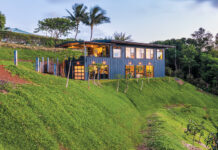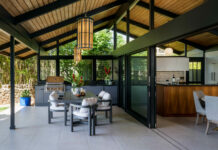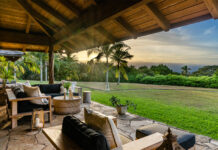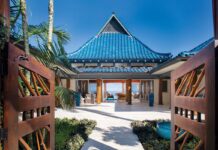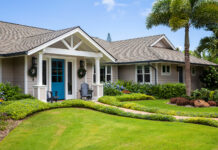Story by Sarah Ruppenthal | Photography by Ryan Siphers
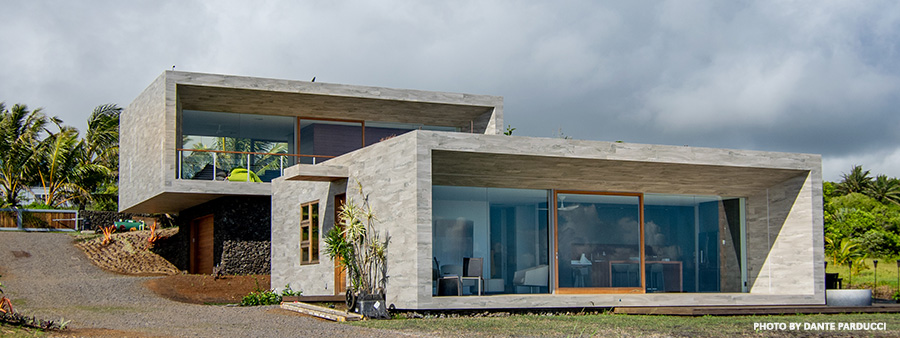
David Kinney isn’t afraid to push the envelope. Case in point: his oceanfront Ha‘ikū home, which has a style all its own. Just like an abstract painting in an art gallery, David says, “There’s a bit of mystery to it. I hope people will look at it and say ‘What is this?’”
With its distinctive shape and panoramic views, the residence certainly makes a statement, albeit quietly. “I wanted it to be interesting, but subtle,” he explains. “I didn’t want it to shout.”
David is the founder of a company that provides information-technology services to international businesses. In addition to all things tech, he has an enduring interest in architecture—and a keen eye for design.
As a kid, he’d sit cross-legged on the living-room floor of his childhood home in Canada and construct miniature communities out of colorful Lego bricks. David’s boyhood fascination never waned: Now a collector of Lego architecture sets, he’s replicated iconic structures like Chicago’s Farnsworth House, home of the late German-American architect Ludwig Mies van der Rohe.
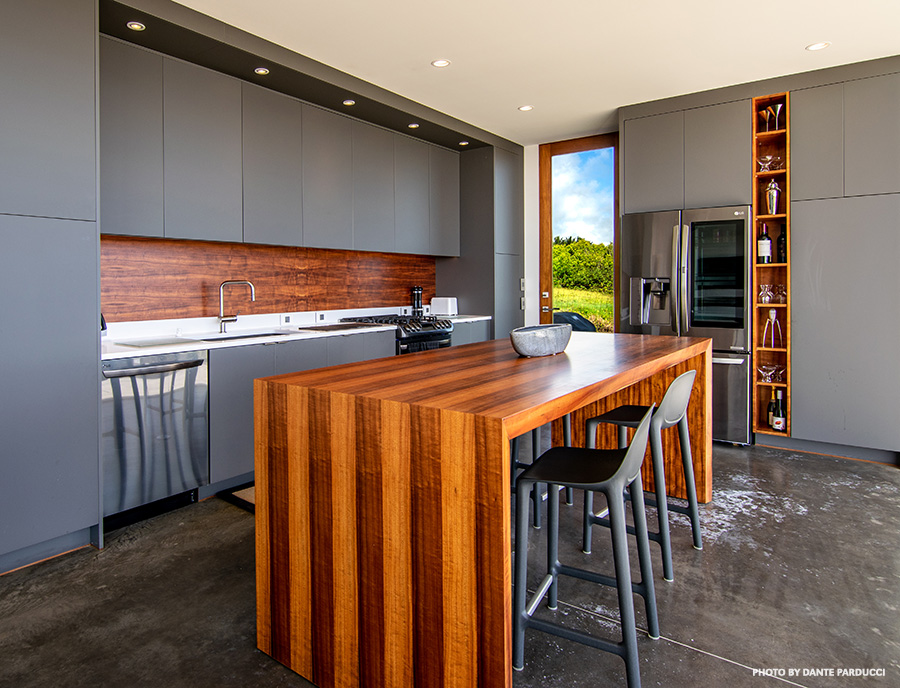
A one-room, glass-box residence, the Farnsworth House was top of mind when David sat down to design a fully off-the-grid home for a vacant two-acre parcel he’d recently purchased in Ha‘ikū. “I wanted a sculptural building that would be comfortable . . . and as self-sustaining as possible,” he says.
Ludwig Mies van der Rohe wasn’t the only influence. David says he was also inspired by the architectural styles of Hawai‘i’s Vladimir Ossipoff, Japan’s Tadao Ando, and Brazil’s Marcio Kogan.
The common themes? A minimal yet innovative aesthetic. An abundance of natural light. And materials like glass, steel, and concrete.
With those elements in mind, David cobbled together an initial design and presented it to Maui architect Peter Niess, who was instantly intrigued. “I’m always excited to work on something that’s totally different . . . and this was definitely different,” Peter says. “It’s 100 percent custom. There’s nothing cookie-cutter about it.”

